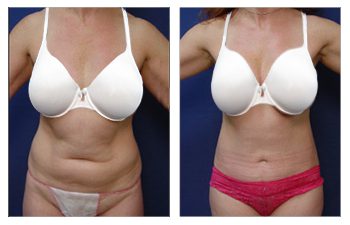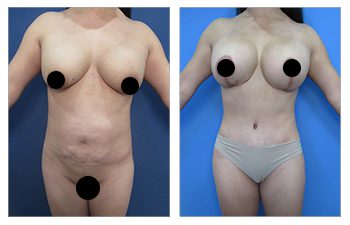Introduction: How Does Liposuction work?
Have you ever wondered how does liposuction works? The word liposuction is comprised of two derivatives which include lipo and suction. Lipo refers to fatty tissues. Fat tissues are located between the skin and muscle. The fat is literally sandwiched between the outer skin layer and the deeper muscle layer. Within this sandwich, the fat is divided into a more superficial layer and a deeper layer.
These two layers are separated by a thin connective tissue lining called the Scarpas fascia. These two layers have distinct differences that are important in the discussion of how liposuction works. The second derivative is suction which refers to the use of negative pressure that is administered through hollow cannulas in order to literally suck out the fat.
Significance of superficial versus deep fat layers
There are distinct anatomic and physiological differences between the superficial and deep fat layers that must be discussed when considering how liposuction works. The superficial fat layer lies directly below the skin. It is thinner than the deeper layer and is traversed by dense connective tissue cables, called retinacular ligaments.
Because of the dense cables, this layer is difficult to traverse thus making liposuction more difficult than the deeper fat layer. Traditional liposuction avoids this layer and in fact, this layer serves as a smooth protective layer to hide any inconsistencies following routine liposuction.
As a final point of interest, these layers remain constant through weight gain and loss. In contrast, the deeper fat layer is loose and void of dense cables making it the ideal layer for liposuction with hollow bore cannulas. This layer is also thicker than the superficial layer and more dynamic and increases and decreases in girth with weight gain or loss respectively.
Differences in suction cannulas and suction pressures
Suction refers to the process of administering negative pressure through hollow bore cannulas that are literally used to rip the fat out of the deeper fat layer. At least, this is the case when we talk about traditional liposuction.
Negative pressures can range from 10mm to 30 mm mercury pressure and are required to literally suction out the fat cells. In general, pressures higher than 15mm mercury pressure will cause fat cells to pop making them not usable for fat transfer. As such, patients who wish to have a Brazilian Buttock Lift, that is fat transfer to the buttock and hips, should only have their liposuction performed with pressures less than 15 mm mercury pressure.
Now, let’s look at liposuction cannulas. Hollow-bar cannulas with small holes at the tip are used to collect fat cells. Cannulas can range from 2mm to 6mm in girth. The larger the cannula caliber, the more aggressively the fat can be removed. In addition, the architecture and density of the cannula holes will affect the efficiency of fat removal. The more holes and the larger the size of the holes, the quicker will the fat be removed.

Surgical steps involved in how does liposuction work
The surgical steps involved in performing liposuction start with a customized surgical plan. Patients must complete a comprehensive physical examination in order to tally all of the areas that maintain undesirable, excess fat. It is critical to address all areas of excess fat when performing liposuction. This will ensure the removal of all problem areas. It will also help determine whether you can accomplish your goals in a single surgery or whether you will require two surgeries.
Staging of liposuction may be required if you require more than 5 Liters of fat removal. This is the limit of safe liposuction volume permitted by the state medical board that can be performed in an outpatient surgical center. When you complete your initial consultation your doctor will be able to recommend whether a single or two-staged liposuction procedure is best for you. You might be wondering why is it so important to remove all of the excess fat. We will discuss this later.
What is a tumescent solution?
Tumescent solution is injected throughout all of the tissue layers immediately prior to liposuction. The tumescent solution provides multiple roles for liposuction. First, a tumescent solution provides pain control by having a numbing solution, called lidocaine. The numbing action of lidocaine can be observed within 10 seconds and will last up to 8 hours. This effect of the tumescent solution is critical in patients undergoing liposuction without general anesthesia. It also provides all patients comfort in the early postoperative period.
Second, a tumescent solution minimizes blood loss by having a vascular constricting element, called epinephrine. Epinephrine is found in our bodies naturally and acts to constrict your blood vessels. For example, god forbid if you get into an accident, your body will automatically go into a sympathetic response and dump epinephrine into your system in an attempt to stop any unnecessary bleeding. This same epinephrine is added into your tumescent solution in to constrict blood vessels that could be disrupted by the action of the hollow bore cannula moving back and forth during liposuction. Finally, bicarbonate is added to the solution to make the tumescent solution slightly basic.
A slight basic solution eases the ability of the lidocaine to get into your cells thus providing numbing as quick as one minute following injection. A second utility of a slightly more basic solution is that it is more physiologic and thus provides a kinder environment to fat cells. This is especially important when you are planning to return the fat cells back into the body such as in a Brazilian Butt Lift.

Traditional Liposuction
Following the surgical design and preoperative markings of the patient, the patient is taken back to the operating theater. The patient is provided anesthesia to make them comfortable. Next, they are prepped to make their skin sterile and draped with drapes. Then strategic port sites measuring less than 5mm are created with a small blade to allow for access to the body. Next, the tumescent solution is infiltrated and a brief delay is required to allow the tumescent solution to do its job. Finally, the liposuction cannulas are used to remove the fat.
Traditional liposuction technique
Traditional liposuction technique requires the surgeon to remove the deep fat evenly from only the deep fat layer. The more uniformly the fat is removed, the smoother will be your result. In order to remove the fat evenly, multiple port holes should be used so that tunnels of fat removed can be crosshatched together.
If only a single port hole is used, it is feasible to consider that the area near the single port will have more passes than the area farthest from the port hole. Crosshatching provides the opportunity to provide more even fat removal in an area of fat excess. It is also critical to avoid fat removal from the superficial fat layer unless you are undergoing high-definition liposuction, as this will result in contour irregularities such as divots.
It is also important to provide for smooth transitions from areas that have been liposuctioned to areas not liposuctioned by a process called feathering. Using your eyes and feel, appropriate liposuction is performed to achieve the desired effect. Liposuction is best performed in a 360 manner in order to remove all of the excess fat. Only by following circumferential body contouring will a masterpiece figure be achieved.
The importance of removing all of the excess fat
The importance of removing all of the excess fat is twofold. First, removing all of your problem spots will result in the best aesthetic outcome. The human body can be compared to a glorified statue. If you are going to sculpt the body with liposuction, you might as well create a masterpiece. Properly sculpted human bodies should look great when naked or in a two-piece bikini and when viewed from all angles.
The second more important consideration is that when you remove all of the excess fat, you are protecting the patient from future contour irregularities. When you lose or gain fat, it will be removed or added to areas where you have the highest density of fat cells. As such, by reducing problem areas with liposuction, you are in essence eliminating any high-density fat areas. As a result, if you do gain weight following liposuction, it will be added uniformly throughout your body. Uniform addition of fat volume rather than a localized increase in growth will result in unnoticeable weight gain!

How does liposuction work following surgery?
Following your liposuction surgery, you will be temporarily placed in customized compression garments. These garments have several functions. First, the compression prevents you from unnecessary swelling. Excess swelling in the postoperative period can result not only in increased pain but potential compromise of your skin. Second, customized compression will allow your fat cells to settle evenly. Despite attempts to remove all of the fat, naturally, a small number of fat cells will remain behind. As these residual fat cells begin to settle, it is critical to make sure they settle evenly or you will risk a contour irregularity.
More importantly, customized garments prevent you from creating a band deformity for example from wearing pants that has a tight waist band. A tight waistband can literally push fat cells out of an area that resulting in a band-like deformity. Patients are universally counseled to wear loose-fitting clothes for the first two weeks following surgery. Finally, compression garments prevent any unnecessary bruising. Minimizing bruising means showing off your body sooner rather than later!
How does liposuction work regarding recovery?
Liposuction recovery is universally tolerable. Most patients describe the pain as soreness like when you have worked out really hard. You will be sore for several days with most of the pain having resolved following one week. Once off of your pain pills, you will be allowed to drive and complete your daily chores. Most patients will be back to normal after about one week.
Since you do not have any lengthy incision lines, patients can even start physical activities at two weeks. This means going to the gym as early as two weeks to make your workout partners jealous. Generalized swelling is usually only minimal by the one-month mark. So if you have any important activities or trips planned, make sure that you get your surgery done a minimum of one month prior.
How does liposuction work with regard to maintenance?
Now that you have your new figure, it is important to maintain it. What you need to realize is that your body is now like a canvas that your surgeon has altered. What you want to do is to minimize any changes of your sculpture. This means leading a healthy lifestyle with good nutrition and regular physical activity. You want to keep your weight stable. Dr. Mowlavi has coined this as your comfort weight which he makes you get to prior to surgery and to maintain after surgery.
Liposuction is one of the most popular cosmetic surgery procedures performed today. In 2020 alone, over 200,000 liposuction procedures were done in the United States. [1] This body sculpting treatment aims to remove stubborn fat deposits and improve body contours. But how exactly does liposuction work to reshape the body? Let’s take a closer look.

What is Liposuction?
Liposuction, also referred to as lipoplasty or suction lipectomy, removes excess fat through small incisions in the skin. A cannula (thin tube) attached to a vacuum device is inserted to loosen fat before suctioning it out. Liposuction can be performed on various areas of the body, most commonly the abdomen, thighs, hips, and flanks. [2]
The procedure is done on an outpatient basis, either under general anesthesia or local anesthesia with sedation. Tiny incisions allow for the insertion of the liposuction cannula. The entire process generally takes from 1-2 hours depending on the number of sites treated.
Patients are often able to return to normal activity within 2-4 weeks. Common side effects include swelling, bruising, numbness, and discomfort. Results from liposuction are permanent, as long as weight is maintained through proper diet and exercise.
How Fat is Removed
During liposuction, fat is removed through a process called deflation. Here are the basic steps:
- Very small incisions no more than 1/4 inch long are made in inconspicuous areas near the target fatty deposits. Typical locations include the groin, belly button, crease of the buttock, etc.
- A sterile saline solution is infused into the fatty area through one incision site. This helps loosen the fat cells and reduce bleeding. The fluid may also contain a local anesthetic.
- After allowing time for the fluid to work, the surgeon inserts the liposuction cannula through an incision. This stainless steel tube is connected to a high-powered vacuum device.
- Using controlled back-and-forth motions, the surgeon guides the cannula through the fat layers, breaking up and suctioning out the fat. This causes the overlying skin to deflate as the underlying fat is removed.
- An additional saline solution may be infused and re-suctioned out to thoroughly remove fatty tissue. Leftover fluid and blood are drained out.
- Incision sites are closed with sutures, tape, or glue. Compressive garments are worn for several weeks to help reduce swelling.
In some cases, laser, ultrasound, or other energy is used to help break up fat prior to removal. This is referred to as laser, ultrasonic, or power-assisted liposuction.
Volume of Fat Removed
The amount of fat removed in liposuction depends on:
- The locations being treated
- Recommendations by the surgeon
- Limits for safe fat removal in a single session
Most plastic surgeons remove between 2-6 liters (4.4-13 pounds) of fat during a routine liposuction procedure. [3] However, there are no universal limits set.
Removing larger amounts increases risks like fluid imbalance, bleeding, contour irregularities, loose skin, and prolonged recovery. That’s why surgeons determine the safe fat removal amount based on factors unique to each patient. This includes skin elasticity, body size, and areas being treated.
Typical Target Areas
Some of the most popular areas for liposuction include:
Abdomen
Stubborn belly fat can be reduced with liposuction of the abdomen. However, this procedure will not tighten abdominal muscles or remove excess skin. It is most effective when the patient is near their ideal weight.
Flanks (“Love Handles”)
Fatty tissue on the sides of the torso in the flank area is often diet and exercise-resistant. Liposuction can create a slimmer, more contoured appearance.
Back
Removing localized fat deposits along the bra line, mid-back, or along the sides can refine back contours.
Hips and Buttocks
Sculpting the hips, buttocks, and around the pubic area can help create more proportionate curves.
Thighs
Stubborn fat on the inner and outer thighs is another common liposuction treatment zone. Liposuction can reduce thigh bulkiness or saddlebags.
Arms
Areas like the upper back of the arms can be reshaped through liposuction. It eliminates jiggling and helps clothes fit better.
Neck and Chin
A double chin and fullness under the jawline can be reduced with liposuction of the neck area.
What Liposuction Can and Cannot Do
Liposuction is very effective at removing localized fat bulges that are unresponsive to diet and exercise. However, there are some limitations to be aware of:
Can
- Permanently remove fat cells from treated areas
- Improve body contours and proportion
- Reduce fullness in common trouble spots
- Provide contouring that lasts with weight maintenance
Cannot
- Tighten loose or sagging skin
- Treat cellulite, stretch marks or sagging skin
- Help with significant weight loss
- Remove deep visceral abdominal fat
- Replace weight management through diet and exercise
Liposuction is best thought of as a body contouring treatment rather than a weight loss procedure. Having realistic expectations of results helps patients be satisfied long-term.
Recovery After Liposuction
Liposuction is generally an outpatient procedure allowing for recovery at home. Early recovery typically involves:
- Wearing a compression garment for 2-6 weeks to reduce swelling
- Bruising, swelling, and moderate discomfort for up to 10 days
- Avoiding strenuous activity for 2-4 weeks
- Taking 5-7 days away from work
- Temporary numbness that resolves over weeks/months
Activity increases gradually over 2-4 weeks. Most patients can resume normal routines within 7-14 days, besides exercise. Complete healing takes 4-6 months on average.
Maintaining Results
While liposuction produces permanent fat cell removal in treated areas, results still require maintenance. Significant weight gain can alter body contours.
To help maintain a sculpted appearance:
- Follow a healthy diet focusing on lean proteins, fruits/vegetables and whole grains
- Incorporate regular exercise into your routine as able
- Schedule follow-up visits with your plastic surgeon for assessment
- Wear compression garments as directed during recovery
- Report any unexpected changes in body shape to your surgeon promptly
Patients should remember that liposuction does not prevent future weight gain. But when combined with a healthy lifestyle, results can be long-lasting.
Finding a Qualified Surgeon
Because liposuction is a complex procedure with the potential for serious risks like infection and contour irregularities, finding a skilled plastic surgeon is crucial. Be sure to select a board-certified plastic surgeon who:
- Is certified by the American Board of Plastic Surgery
- Is a member of the American Society of Plastic Surgeons (ASPS)
- Has extensive liposuction experience and continuing education
- Operates in an accredited facility
Do not choose a provider based on cost savings or convenient location. Vet their qualifications thoroughly.
Conclusion: How does liposuction work?
In summary, this blog was written to help you appreciate how does liposuction work. When you embark upon this journey to improve your appearance, liposuction can be a tremendous help. This journey also requires you to lead a healthy lifestyle. The final component to improving your appearance is choosing the right surgeon who maintains an artistic eye and possesses the surgical skills to get you to your goals. We hope that this article helped answer your question, “How does liposuction work?”
In summary, liposuction improves body contour by permanently removing localized fat cells through small incisions and the use of cannula suction. Ideal candidates are near their optimal weight with good skin elasticity. Though recovery is fairly quick, results take months to fully appreciate and require maintenance through lifestyle habits. Selecting an experienced, board-certified plastic surgeon is key to ensuring safety and aesthetic outcomes.
References:
[1] American Society of Plastic Surgeons. Plastic Surgery Statistics Report. 2020. Accessed November 19, 2023. https://www.plasticsurgery.org/documents/News/Statistics/2020/plastic-surgery-statistics-full-report-2020.pdf
[2] American Society of Plastic Surgeons. Liposuction. Accessed November 19, 2023. https://www.plasticsurgery.org/cosmetic-procedures/liposuction
[3] Cleveland Clinic. Liposuction. Accessed November 19, 2023.
https://my.clevelandclinic.org/health/treatments/11009-liposuction

